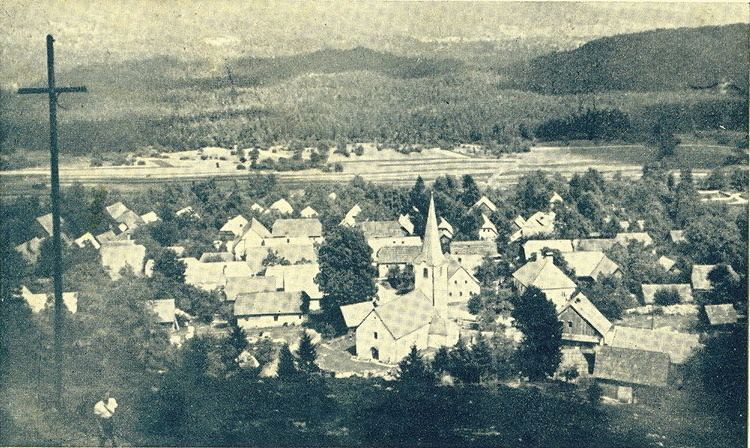Area 23.75 km² Population 2 (2012) | Elevation 659 m Local time Friday 11:51 AM | |
 | ||
Weather 17°C, Wind SE at 5 km/h, 34% Humidity | ||
Gotenica ([ɡɔtɛˈniːtsa]; in older sources also Gotnica, German: Göttenitz, Gottscheerish: Gənize or In dr Gənizn) is a settlement in the Municipality of Kočevje in southern Slovenia. The area is part of the traditional region of Lower Carniola and is now included in the Southeast Slovenia Statistical Region.
Contents
Map of 1338 Gotenica, Slovenia
Name
Gotenica was first attested in written sources in 1363 as Goteniz (and as Gotintz and Gotnickh in 1498, and Gattenitz in 1499). The name is believed to be related to the toponym Gotenc, both based on the personal name *Goten, in turn derived from *Gotъ. Other Slovenian toponyms presumably based on this name are Gotna vas (a suburb of Novo Mesto), Gotovlje, and Goče. Other theories suggests that the name is derived from the Slovene verb gatiti 'to accumulate, pile up', referring to a place where water accumulates during flooding, or from the Slovene noun kot 'closed valley, cirque'. It is unlikely that the name is connected with the Goths, as some have suggested.
History
Gotenica is among the oldest villages in the Kočevje area that was established by Slovenes. It may have been established between 1315 and 1332 under Count Meinhard of Ortenburg (1280–1332). Later Gotenica was also settled by Gottschee Germans. In 1574 it had 12 farms divided into 24 half-farms, corresponding to a population between 110 and 120. In 1770 there were 68 houses in the settlement. A school was established in Gotenica in 1854. Before the Second World War, Gotenica had 108 houses and a population of 359, including 13 ethnic Slovenes. The economy of the village was based on farming, forestry, transporting sawn lumber, and beekeeping. Gotenica had a steam-powered sawmill, an inn, and a store. The German residents of Gotenica were evicted in December 1941. After the Second World War, in 1948 the village had a population of 138. In 1949 it was selected for the construction of an underground bunker system for Slovenia's military and political leaders. It was made part of a military exclusion zone and the remaining population was evicted. The village was sealed off until 1990 and it had no permanent residents during this time.
Religious heritage
Gotenica had two churches, a chapel, and a cemetery, all registered as cultural heritage today, that were destroyed by Slovenia's communist government after the Second World War.
